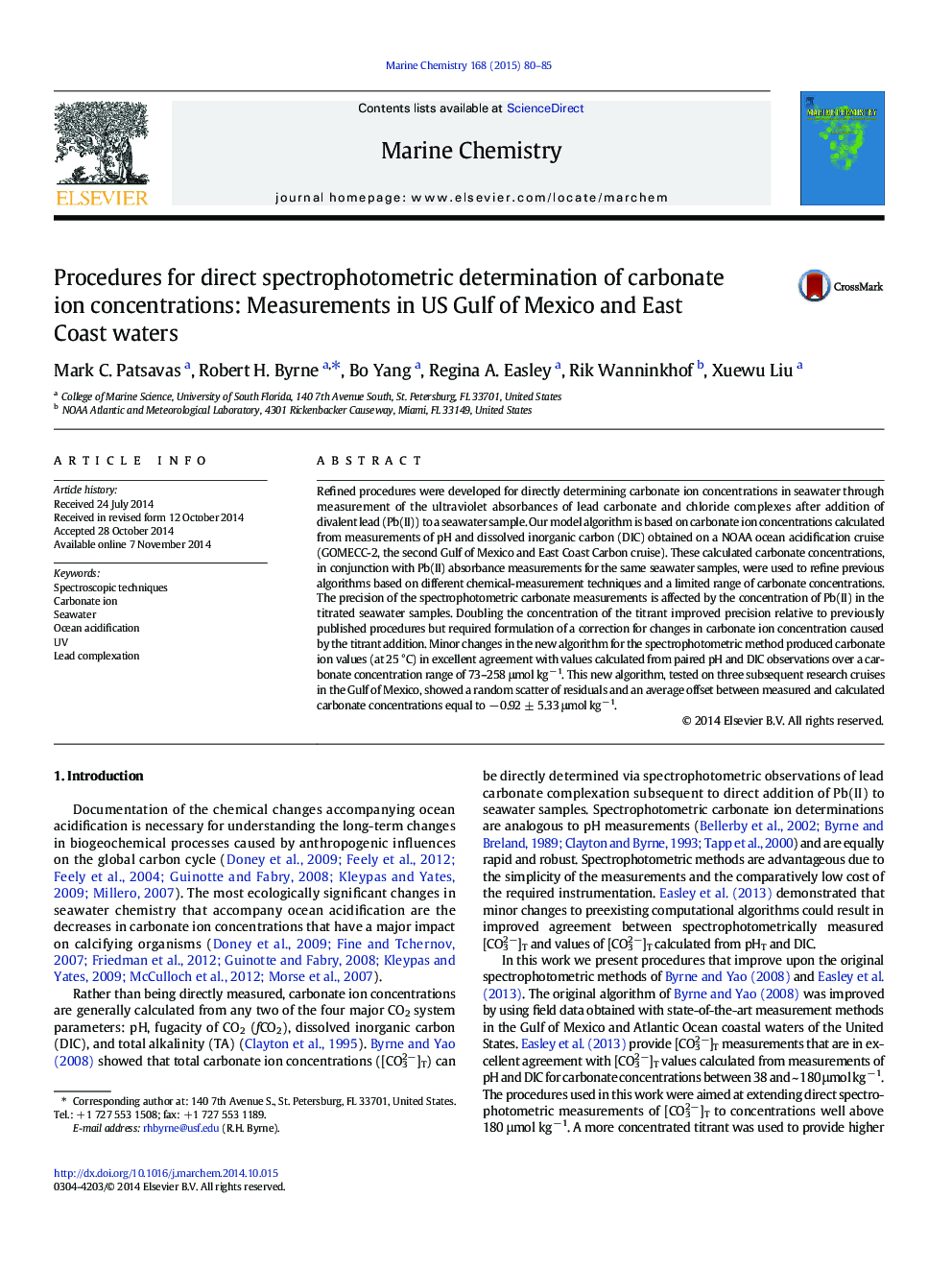| Article ID | Journal | Published Year | Pages | File Type |
|---|---|---|---|---|
| 1261229 | Marine Chemistry | 2015 | 6 Pages |
•UV procedures for determination of carbonate concentrations in seawater are described.•Procedures account for perturbations created by addition of Pb(II) perchlorate.•Methods allow measurements of carbonate concentrations up to 260 μM.•Measurement protocol can be extended to allow direct in situ observations in seawater.
Refined procedures were developed for directly determining carbonate ion concentrations in seawater through measurement of the ultraviolet absorbances of lead carbonate and chloride complexes after addition of divalent lead (Pb(II)) to a seawater sample. Our model algorithm is based on carbonate ion concentrations calculated from measurements of pH and dissolved inorganic carbon (DIC) obtained on a NOAA ocean acidification cruise (GOMECC-2, the second Gulf of Mexico and East Coast Carbon cruise). These calculated carbonate concentrations, in conjunction with Pb(II) absorbance measurements for the same seawater samples, were used to refine previous algorithms based on different chemical-measurement techniques and a limited range of carbonate concentrations. The precision of the spectrophotometric carbonate measurements is affected by the concentration of Pb(II) in the titrated seawater samples. Doubling the concentration of the titrant improved precision relative to previously published procedures but required formulation of a correction for changes in carbonate ion concentration caused by the titrant addition. Minor changes in the new algorithm for the spectrophotometric method produced carbonate ion values (at 25 °C) in excellent agreement with values calculated from paired pH and DIC observations over a carbonate concentration range of 73–258 μmol kg − 1. This new algorithm, tested on three subsequent research cruises in the Gulf of Mexico, showed a random scatter of residuals and an average offset between measured and calculated carbonate concentrations equal to − 0.92 ± 5.33 μmol kg− 1.
